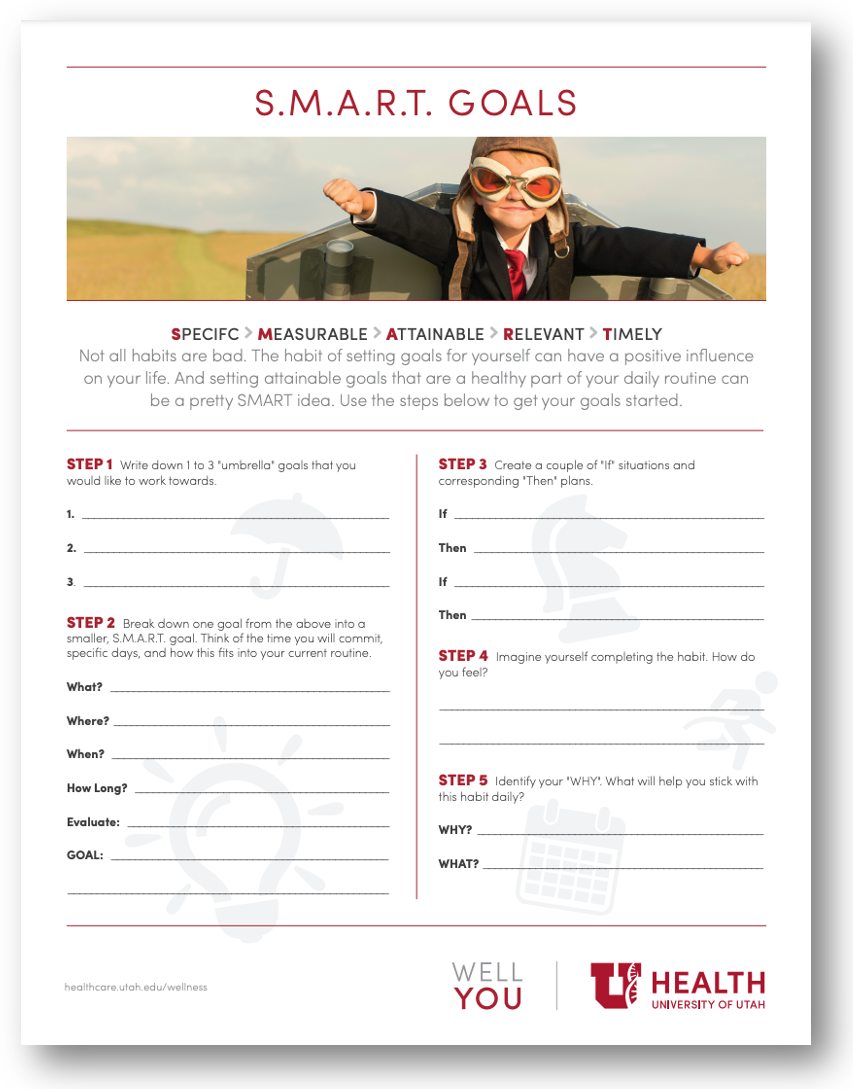leep is a major component of health and well-being. Without a good night's sleep, it is hard for me to be productive at work, fully present with my family, or have the energy to go outside for a walk. Sleeping is a time for our bodies to compartmentalize the day, regenerate and make space for the new day to come.
Sleep wellness looks different for every person. Carving out 7-9 regularly timed hours for rest is ideal if possible. For me, I know when I need to be in bed to get my nine hours of sleep before the alarm goes off at 6:45AM.
If you find yourself struggling, try integrating one or all three of the following strategies to improve your sleep quality:
-
Minimize or remove LED displays from your bedtime routine. Consider plugging in phones across the room or somewhere else entirely.
-
Minimize using the bedroom for work, watching TV, or eating. The power of association is strong—let yourself associate your bedroom with sleep!
-
Reading, journaling, or meditating are quiet activities that aid in calming our nervous system, readying ourselves for sleep. Once habitually practiced, your body associates these strategies with sleep—and you begin to feel sleepy (there’s that power of association, again.)
I know it can be hard to choose to read after a day on the computer answering emails or reviewing pdfs, but you can try something light or do activities like drawing or journaling. “Three Good Things” is a quiet journaling activity to slow the mind before bed, while choosing to focus on the positive things that happened throughout the day.
These strategies work to slow our minds and create a routine our bodies can follow. My routine is reading, and without fail, I start to fall asleep within 30 minutes. (I wish I could finish a book as fast as my book club.)
Creating a zen space
Consider your bedroom. The following conditions can make your bedroom more sleep-friendly:
-
Darkness. Ensuring your room has appropriate blinds and curtains for when you need to sleep is vitally important. Whether you work night or swing shifts, or have a neighbor with bright, outdoor lights, blackout blinds or curtains allow circadian rhythms to take over helping you fall asleep more readily.
-
Temperature. Cooler room temperatures help to lower our body temperature, which has been shown to assist in falling asleep.
-
Tidy and pleasant smelling. Calming scents, such as lavender, can help.
-
Peaceful decorations and plants can make the bedroom feel relaxed and tranquil. You might want to avoid overly bright colors.
I’ve found that all white/neutral bedding has a calming effect on me. I also have two black and white photographs of nature hanging on the wall for the same reason. My bedroom gives me a sense of peace so that all I have to do is add the quiet!
S.M.A.R.T. Goals

Setting attainable goals that are a healthy part of your daily routine is pretty SMART.
Click here to download our S.M.A.R.T. Goal planner.
Relax and decompress
Challenge yourself to devote 30 minutes of relaxation time before bed as part of your regular sleep schedule. In addition to the sleep-inducing strategies and bedroom conditions, you may consider one of these three guided practices to decompress from the Resiliency Center.
If you’re ready to make a change toward better sleep, start by brainstorming your goals and which actions you will take to make the most of your rest and rejuvenation!
With practice, perhaps we can all improve our sleep a little.
Britta Trepp
Addiction specialist psychiatrist Beth Howell addresses the stigma and silence of substance abuse in health professions. If you or someone you know is struggling, there’s a global community of anonymized support.
Many people, including health care professionals, are turning to alcohol and other substances to help cope with the stresses of Covid-19. Licensed psychologist Kelly Lundberg shares how to talk to colleagues who may be silently suffering.
We have personal protective equipment (PPE) for our body–but what about our mind? Huntsman Cancer Institute nurse manager Cassidy Kotobalavu has lead training on the concept of emotional contagion–how good (and bad) emotions spread. Here are Cassidy’s expert tips (with slides) on managing emotional contagion in health care.
